Road trip! Catch October's annular solar eclipse with 5 iconic routes through the US
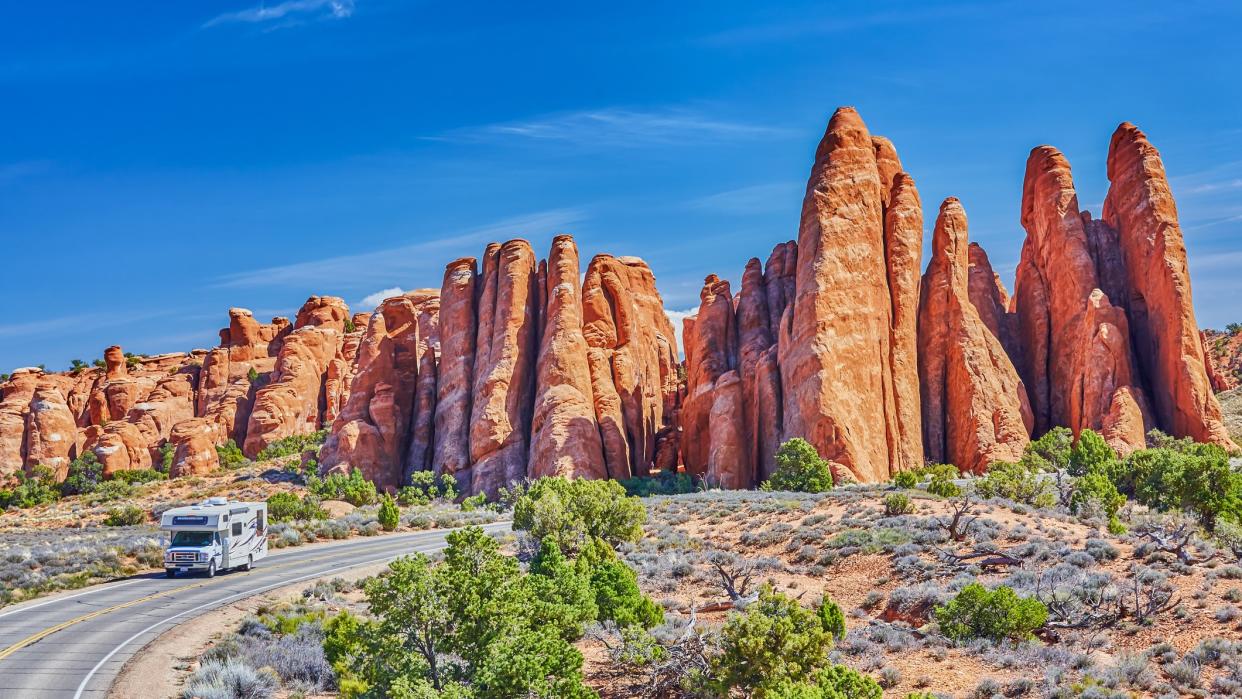
To witness a solar eclipse often takes effort, and on October 14, 2023, anyone in the U.S. who wants to see a 'ring of fire' (rather than a partial solar eclipse) will need to be within a roughly 130 miles- (209 kilometers-) wide path stretching from Oregon to Texas.
So why not combine it with a road trip? Crossing some of the country's most iconic landscapes, National Parks and Dark Sky Parks, the path of the Oct. annular solar eclipse is something to behold for anyone who loves travel, adventure and exploring the night sky.
Covering most U.S. states within the path of annularity — Oregon, California, Nevada, Utah, Colorado, Arizona, New Mexico and Texas — here are seven carefully crafted itineraries to take you on an extraordinary journey to see a 'ring of fire.' solar eclipse.
1. An outback eclipse in Oregon
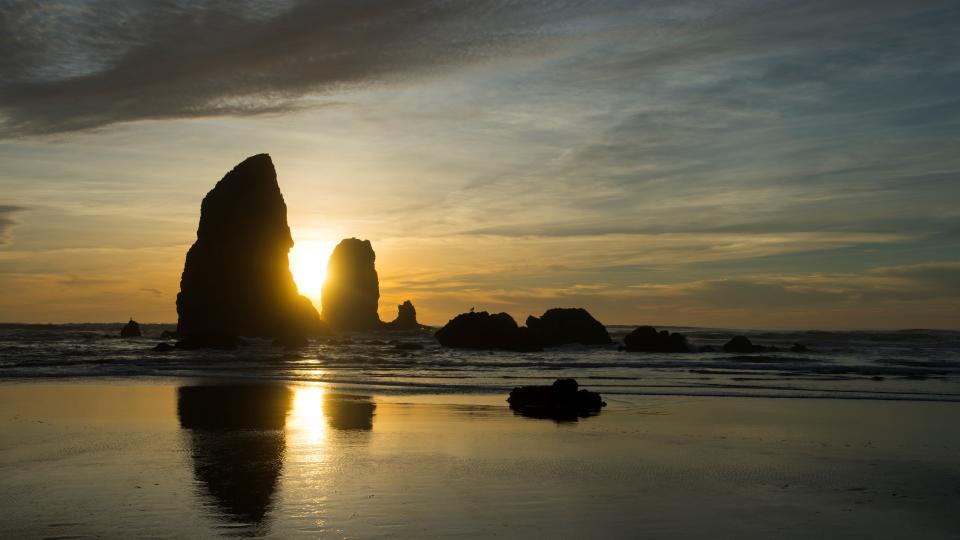
Duration: 7 days
Start and finish: Portland, Oregon
Recommended eclipse viewing location: Oregon Outback Scenic Byway
Starting in Portland, spend a week on a scenic drive along the Oregon Coast then dip inland to outback Oregon and adventure capital Bend. On the fabulous coast, be sure to stop for fish and chips in Cannon Beach, cheese at Tillamook and whale-watching from the coast at Depoe Bay. The 'ring of fire' will be visible from a 137-mile stretch starting from here south to Denmark, but this is a famously foggy coast. So a few days before the eclipse head inland at Reedsport to tour Crater Lake National Park — North America's deepest, bluest lake — which is in the path, though the chances of a clear sky here on eclipse day are uncertain (there could even be snow!).
So instead head down to Klamath Falls either for Eclipse Fest 2023 or to turn off for Lakeview where you can join the Oregon Outback Scenic Byway (a 171-mile route along OR-31 amid arid high desert) to Bend. Good locations for eclipse viewing along the way include Fort Rock Cave State Natural Area (9:18 a.m. for 3 mins 25 secs from 09:18 a.m.) and Summer Lake Hot Springs (9:18 a.m. for 4 mins 25 secs).
After the eclipse head to Bend, famous for its beer, but surrounded by endless opportunities for outdoor activities — the highlight being hiking at Smith Rock State Park on the way back to Portland. If you have extra days spend them at the Columbia River Gorge National Scenic Area east of
2. Stargazing and an eclipse in the Great Basin
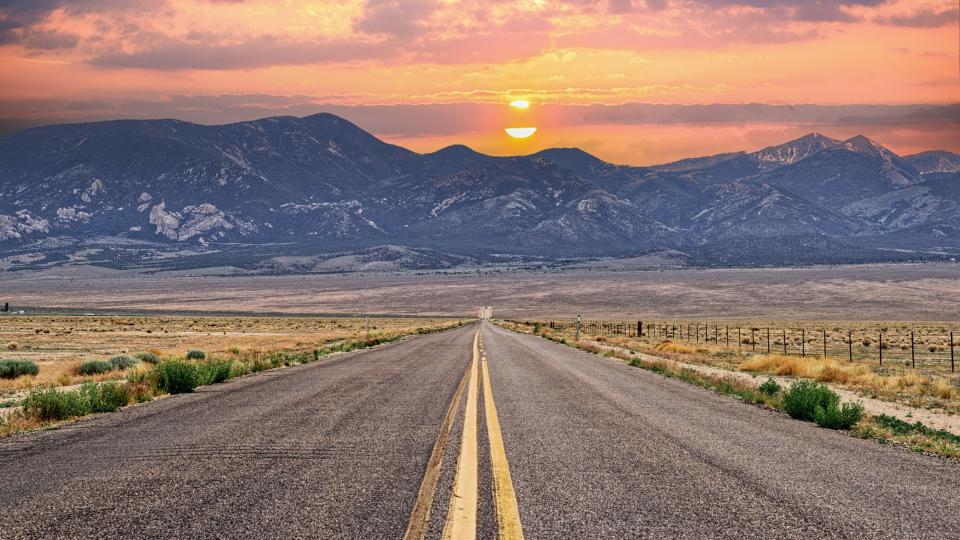
Duration: 5 days
Start/finish: Las Vegas, Nevada and Salt Lake City, Utah
Recommended eclipse viewing location: Great Basin National Park, Nevada
Take a one-way rental vehicle in Las Vegas and head north to check out the crimson rock formations Valley of Fire State Park. Then head north on Highway 93 to Ely, home to East Ely Railroad Railroad Museum and Northern Nevada Railway as well as the 30-foot-tall, beehive-shaped stone kilns of Ward Charcoal Ovens State Historic Park. Nearby are several options for a rural 'ring of fire' at 9:24 a.m. including the off-grid Ward Mountain Recreation Area (3 mins 12 secs), the high desert Cave Lake State Park (3 mins 40 secs) and Garnet Hill public recreation area (3 mins 31 secs). However, Great Basin National Park — also a Dark Sky Park with fabulously dark skies — will hold an event in its Astronomy Amphitheater bear the Lehman Caves Visitor Center (9:24 a.m. for 3 mins 48 secs).
Don't miss the Great Basin Observatory — the first research-grade observatory built in a U.S. National Park and likely open for the eclipse — as well as Lehman Caves, Wheeler Peak Summit Trail and Ancient Bristlecone Pine Forest to see trees dating back 4,900 years. Take Highway 93 north to Interstate 80 and head east to Salt Lake City via remote camping under dark skies at The Knolls and stargazing on Antelope Island State Park, another Dark Sky Park.
Related: 'Ring of fire' from US national parks: 7 great places to see the annular solar eclipse 2023
3. An epic National Parks eclipse trip
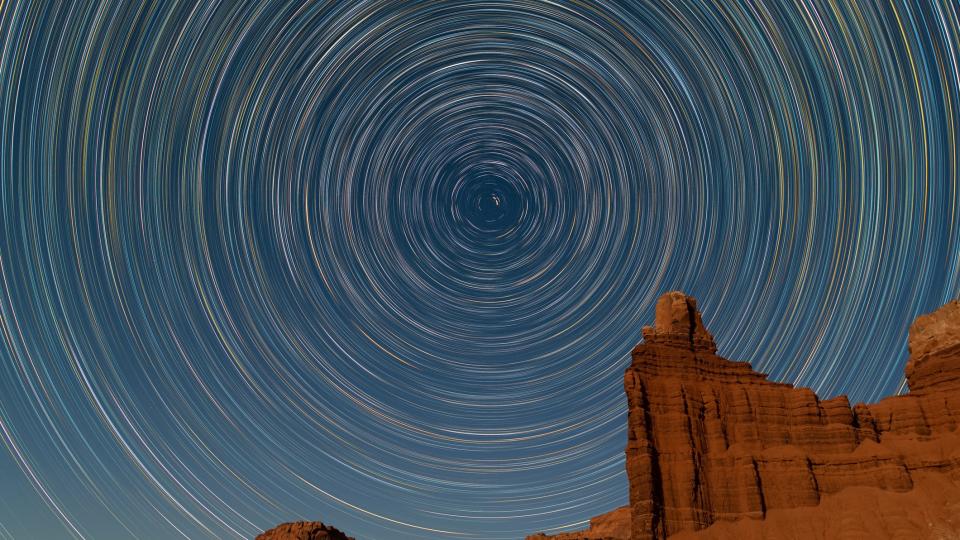
Duration: 14 days
Start/finish: Denver, Colorado and Las Vegas, Nevada
Recommended eclipse viewing location: Capitol Reef National Park, Utah
Here's an epic journey from Denver to Las Vegas (or vice versa), intercepting the path of annularity in Utah. Begin with a few days at Rocky Mountain National Park before hitting Colorado National Monument on the way to Moab, Utah. Use this small town to access Arches National Park (you'll need a timed entry ticket), Dead Horse State Park and Canyonlands National Park — all three of them Dark Sky Parks. The latter's Grand View Point Road pokes into the northern edge of the eclipse path, which means beautiful Baily's beads within a 'broken annular' eclipse.
If you'd rather see the perfect 'ring of fire' then push on to the eclipse-viewing event (book in advance) at the Valley of Goblins Observation Point at Goblin Valley State Park (10:28 a.m. for 3 mins 15 secs). Another option — with a longer 'ring of fire' — is the visitor's center at Capitol Reef National Park (10:27 a.m. for 4 mins 29 secs). As you cross the centreline of the path, any RV park, campsite or lodging in and between Torrey and Boulder is perfect.
Although both have a shorter 'ring of fire', don't miss Kodachrome Basin State Park (10:28 for 2 mins 32 secs) and the iconic Bryce Canyon National Park (10:27 for 2 mins 39 secs at the Visitor Center) further southwest. Next comes a gawp at the amphitheater of Cedar Breaks National Monument and varied hikes around Zion National Park before driving to Las Vegas, possibly via Valley of Fire State Park and, if you have time to kill before check-in, Red Rock Canyon.
Related: Dark Sky Utah: A complete guide to astro-travel in America's darkest state
4. Grand Canyon and a southeast Utah eclipse
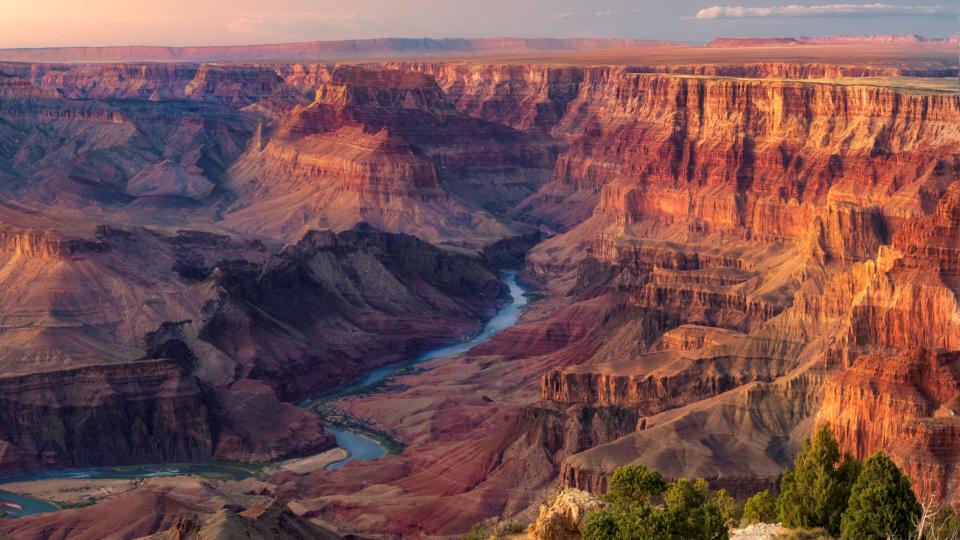
Duration: 7 days
Start/Finish: Phoenix, Arizona and Las Vegas, Nevada
Recommended eclipse viewing location: Goosenecks State Park, Utah
230 miles (370 km) and 280 miles (450 km) from Phoenix and Las Vegas, respectively, Grand Canyon National Park — also now a Dark Sky Park — is the target of this itinerary. However, since it's outside the southern limit of the path of annularity a short drive into Utah is recommended for the 'ring of fire.'
After marveling at the layered bands of red rock, drive to Page for Lake Powell, Horseshoe Bend and a tour around Antelope Canyon before heading for an eclipse view at either Monument Valley Navajo Tribal Park (10:29 a.m. for 4 mins 16 secs) — being careful to respect indigenous attitudes to eclipses — or to look through solar telescopes at the 'Ring of Fire Fest' at Goosenecks State Park (10:29 a.m. for 4 mins 40 secs).
If you have a 4x4 then also consider a drive through Valley of the Gods bang on the centreline (10:29 for 4 mins 40 secs). Return to Interstate 40 via either the way you came or via the dramatic sandstone cliffs of Canyon de Chelly National Monument in the Navajo Nation.
Related: The ultimate guide to planning epic stargazing road trips in the US southwest
5. Northern New Mexico eclipse explorer
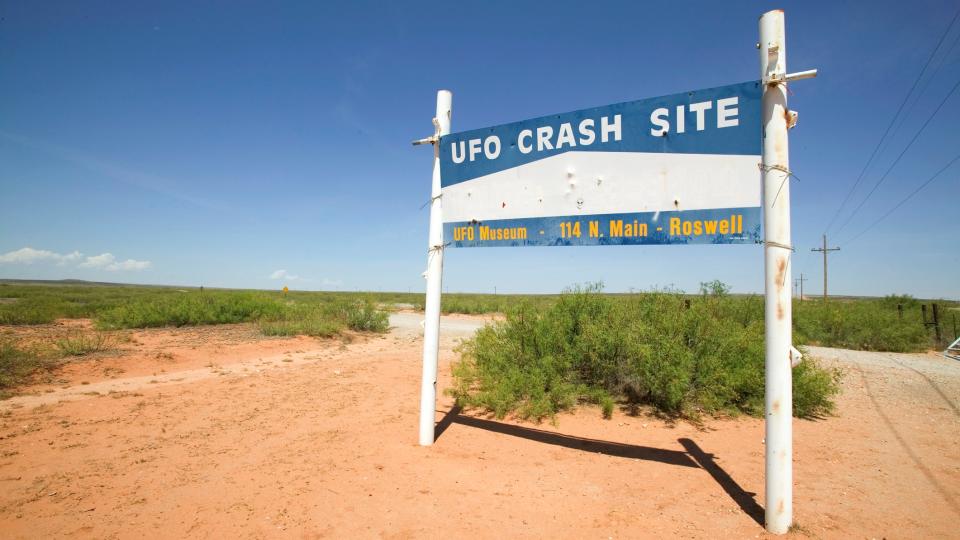
Duration: 3 days
Start/finish: Albuquerque, New Mexico
Recommended eclipse viewing location: Roswell, New Mexico
Albuquerque is the second-largest city in the path after San Antonio, Texas, but unless you plan to attend the Albuquerque International Balloon Fiesta it's worth avoiding for eclipse day. A loop north of the city will take you to the hot springs and fumaroles of Valles Caldera National Preserve, Bandelier National Monument's ancient cliff dwellings, and artsy Santa Fe. For a view of Baily's beads on eclipse day head to Ski Santa Fe on the northern edge of the path.
Two other locations to the southeast stand out for eclipse-viewing if a long 'ring of fire' is your target — tiny Corona (10:36 a.m. for 4 mins 35 secs) and the UFO capital of the world, Roswell (10:38 a.m. for 4 mins 30 secs). Due south of the latter is Carlsbad, another great location for edge effects, and the gateway to Carlsbad Caverns National Park, a Dark Sky Park with fabulous stargazing.
Related: Solar eclipses 2023: When is the next solar eclipse?
Additional resources
For planning trips to see solar eclipses, the interactive Google Maps on Xavier Jubier's eclipse website is invaluable (and the source for the timings in this article), as are the simulations on Eclipse 2024 and the beautiful eclipse maps on GreatAmericanEclipse.com. Climate and weather predictions by meteorologist Jay Anderson on Eclipsophile.com are equally instructive as are ex-NASA eclipse calculator Fred Espenak's Eclipse Wise and Mr. Eclipse.

